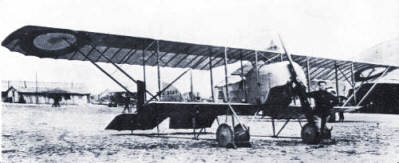 |
AIRCRAFTOF THEA E F |
Caudron G.III

Development and Operation
The French Caudron G.III was a two seat, single-engined tractor biplane, with a twin-boom tail. The end of the lower booms was used as a landing skid. It was initially built in May of 1913. Its wing spars were of ash and spruce with reinforcing strips of metal. The wings had no dihedral. The design used wing warping, rather than ailerons, for controlling movement of the aircraft. Initially, the horizontal stabilizer also used warping, but later a hinged stabilizer was added. The aircraft was used as an Army cooperation and reconnaissance machine. |
Aircraft and Flight Characteristics
Caudron G.III 2-seat reconnaissance aircraft with 90 hp Anzani engine
|
Length |
6.40 m |
|
Height |
2.50 m |
|
Empty Weight |
420 kg |
|
Loaded Weight |
710 kg |
|
Maximum Speed |
112 km/hr. |
|
Wing Span |
13.40 m |
|
Climb |
|
|
To 2,000 m |
18 minutes |
|
To 3,000 m |
32 minutes |
|
Endurance |
4 hrs. |
|
Armament |
Usually flown unarmed, although crew was given a standard issue rifle |
References:
- Davilla, J. and Art Soltan, French Aircraft of the First World War
- Photo from the author.
To find other Doughboy Features visit our |
Membership Information  Click on Icon |
For further information on the events of 1914-1918
visit the homepage of |
Michael E. Hanlon (medwardh@hotmail.com) regarding content,
or toMike Iavarone (mikei01@execpc.com) regarding form and function.
Original artwork & copy; © 1998-2000, The Great War Society